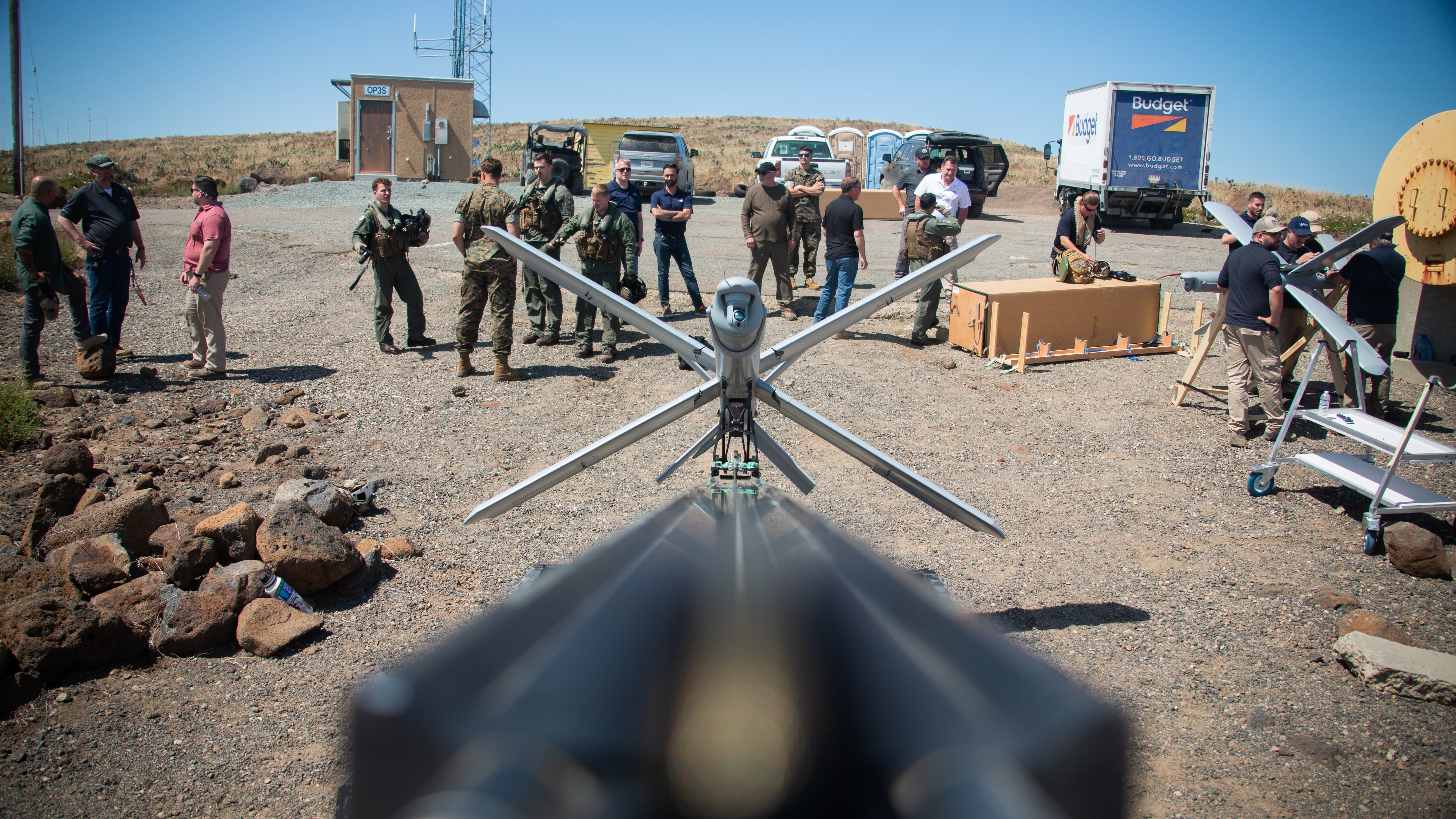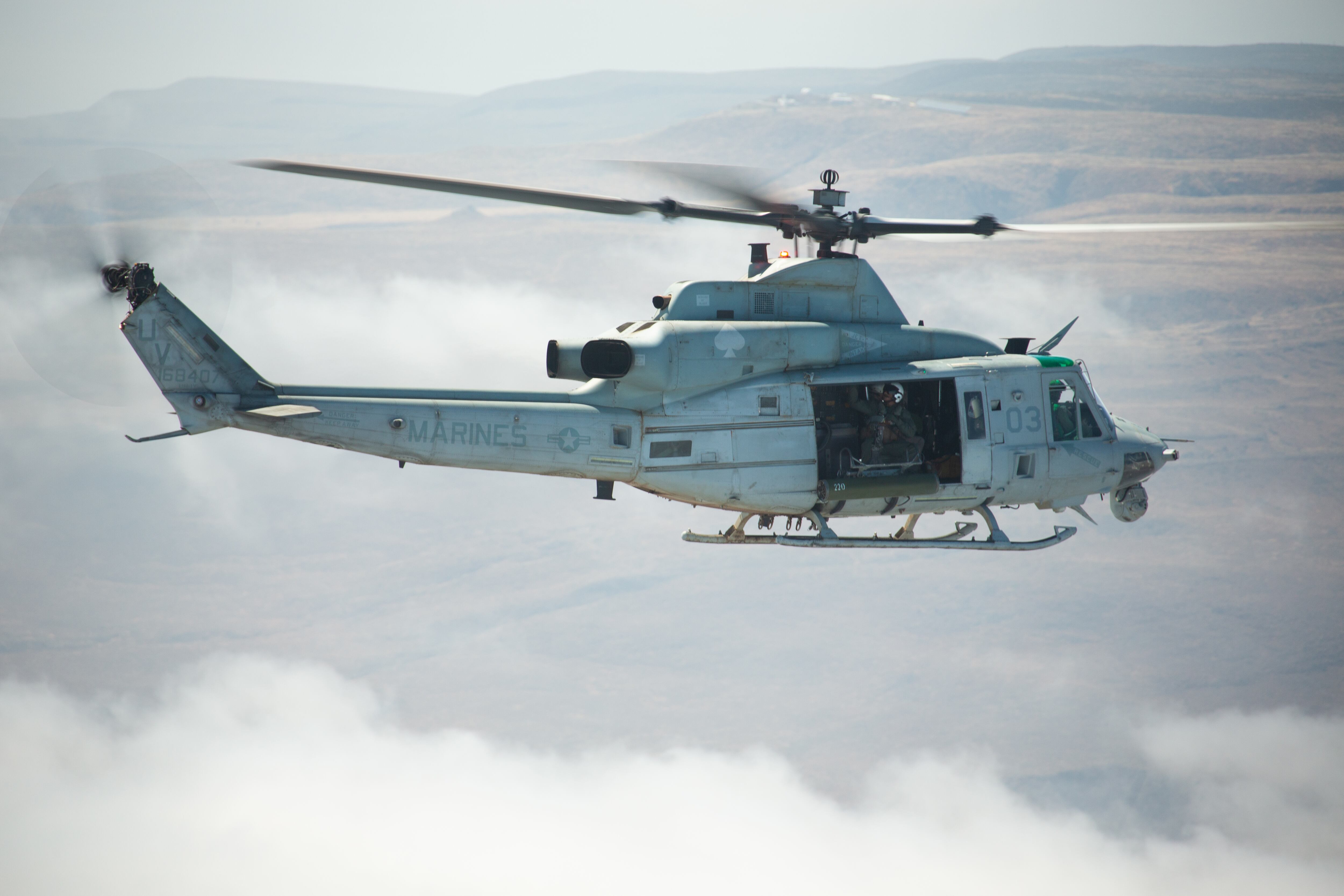WASHINGTON — The U.S. Marine Corps intends to replace some decades-old Hellfire missiles with a family of long-range loitering munitions, giving its attack helicopters greater range and lethality for a fight in the Pacific region.
This move comes as part of the Corps’ ongoing Force Design 2030 modernization effort to prepare the service to deter or win a fight against China and other potential adversaries.
The Marine Corps on Monday released an annual status update on Force Design efforts, which included a nod to the service’s Long-Range Attack Munition effort supported by the undersecretary of defense for research and engineering, “to rapidly develop and field a low-cost, air launched family of loitering, swarming munitions.”
In a June 2 call with reporters, Brig. Gen. Stephen Lightfoot, director of the Capabilities Development Directorate, noted that as an AH-1 pilot, he has firsthand experience with the Hellfire missile. Depending on the helicopter’s altitude, a pilot might get 8 kilometers (5 miles) of range from the weapon.
“That’s great in [Operation Iraqi Freedom], [Operation Enduring Freedom] and areas we’ve been fighting in for years. But when you move over to the Indo-Pacific and some of the distances we’re talking about, 8 kilometers doesn’t really do as much as you’d want,” Lightfoot said.
Noting that the last H-1 attack helicopters were delivered last year and that the Corps will operate them for several more decades, he said the service must now pursue both evolutionary and revolutionary ideas to keeping these aircraft relevant to the fight.
The service is already experimenting with these long-range, loitering, swarming munitions and expects to field them “within the next few years,” Lightfoot noted.
“That is a capability that brings hundreds of kilometers, and that allows us to be able to use a current platform to be able to do things that we never thought we’d be able to do,” Lightfoot said, calling this development effort “critical.”
These munitions would also be operable from ground launchers, he added.

While the helicopters’ own range and maneuverability would enhance the munitions’ capability, Lightfoot said, aircraft aren’t always in the air. To ensure Marines operating forward have round-the-clock access to long-range offensive weapons, he said the service would pursue a launcher for use by ground troops.
In a separate interview on the Force Design update, Scott Lacy, the deputy director of the Marine Corps Warfighting Laboratory, said the organization is working on this effort with the aviation community. The work includes studying munitions already on the market as well as other experimental capabilities.
The Force Design annual update noted “other projects include developing a common launcher for the family of ground launched loitering munitions and testing a low-cost, hypersonic booster in a form factor the Marine Corps can logistically support in a contested environment.”
Lacy did not elaborate much on the hypersonic booster, other than to say experimentation is ongoing at the lab.
In the same interview, Col. Daniel Wittnam, the director of the Marine Corps Integration Division, described another long-range offensive fires effort in which the service is involved, in conjunction with the Office of the Secretary of Defense.
The office provided money for the Corps to experiment using the Maritime Strike Tomahawk — a derivative of the legacy Tomahawk land-attack missile that the office directed in fiscal 2017 — as a land-based weapon.
Marines will use the Naval Strike Missile as their first ground-based, anti-ship missile but have previously said they intend to pursue other longer-range weapons for the future.
Wittnam said the 11th Marine Regiment, 1st Marine Division at Camp Pendleton, California, was standing up a battery to work with the Maritime Strike Tomahawk.
The question the Marines have as they consider this and other emerging capabilities is whether the technology is naval and expeditionary, given their focus on littoral operations in the Pacific, the colonel said.
He noted the current form factor is not, but he said the experimentation would continue. (The proof-of-concept system would mount the missile launcher on a Joint Light Tactical Vehicle chassis, a setup that already had a tip-over incident due to the center of gravity being off.)
Lt. Gen. Karsten Heckl, the deputy commandant for combat development and integration, told reporters during the June 2 roundtable that not all the ongoing experiments would be successesful, but the Corps would learn from all of them as it rapidly modernizes.
“I don’t have the luxury of, (A) test something, (B) get the feedback, (C) let’s make changes. You know, that takes years and years. We have to iterate and, if necessary, fail quickly and learn faster, and then iterate again,” he said.
In doing so, Heckl added, “we have made the fleet more capable. Period. Full stop.”
Megan Eckstein is the naval warfare reporter at Defense News. She has covered military news since 2009, with a focus on U.S. Navy and Marine Corps operations, acquisition programs and budgets. She has reported from four geographic fleets and is happiest when she’s filing stories from a ship. Megan is a University of Maryland alumna.




